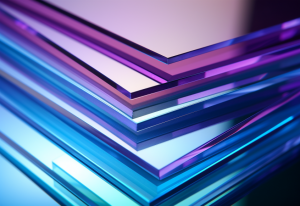Introduction
Physical Vapor Deposition (PVD) technology is at the forefront of materials science, continually evolving to meet the demands of various industries. In this article, we undertake a comprehensive exploration of the evolving trends in PVD technology. From the latest innovations to potential applications across different industries, we delve into the intricate landscape of PVD. We aim to illuminate the current trends, providing insights and a glimpse into the future trajectory of PVD technology.
Current Trends in PVD Technology
Advanced Coating Materials:
One of the notable trends in PVD technology is the utilization of advanced coating materials. Researchers and engineers are exploring new materials with enhanced properties, such as improved hardness, wear resistance, and thermal stability. For instance, the incorporation of nanocomposite materials into PVD coatings has shown promising results in enhancing the overall performance of coated surfaces [1].
High-throughput PVD Processes:
As industries demand faster and more efficient production processes, high-throughput PVD technologies are gaining prominence. Techniques like magnetron sputtering and pulsed laser deposition are being optimized for increased deposition rates without compromising coating quality [2]. This trend is particularly crucial for applications in large-scale manufacturing, such as automotive and aerospace industries.

Nanoscale Coatings and Thin Films:
The drive toward miniaturization and precision in various applications, including electronics and medical devices, has led to a growing interest in nanoscale coatings and thin films. PVD techniques are being refined to achieve precise control over film thickness at the nanoscale, enabling advancements in nanoelectronics, sensors, and medical implants [3].
Environmentally Friendly PVD:
In response to increasing environmental concerns, there is a noticeable trend towards developing environmentally friendly PVD processes. Researchers are exploring alternative coating materials that are free from hazardous substances, as well as optimizing energy-efficient deposition methods [4]. This shift aligns with the broader industry push towards sustainability.
Future Directions in PVD Technology
Integration with Industry 4.0:
As the era of Industry 4.0 unfolds, PVD technology is poised to integrate seamlessly with smart manufacturing processes. The incorporation of artificial intelligence (AI) and the Internet of Things (IoT) into PVD systems will enable real-time monitoring, predictive maintenance, and adaptive control, optimizing overall efficiency and performance [5].
Related Article: Role of Advanced Coating Technologies in Industry 4.0

Exploring New PVD Techniques:
The future of PVD technology holds the promise of novel techniques and methodologies. Researchers are exploring emerging PVD methods, such as atomic layer deposition (ALD) and ion beam deposition, aiming to overcome current limitations and open new avenues for precision coatings in various applications [6].
Functionalized Coatings for Emerging Industries:
With the rise of emerging industries such as flexible electronics, wearable devices, and quantum computing, there is a growing need for specialized and functionalized coatings. PVD technology is expected to play a pivotal role in developing coatings tailored to the unique requirements of these cutting-edge applications [7].
Implications and Considerations
The continuous evolution of PVD technology has far-reaching implications across diverse industries. Enhanced coating materials can lead to extended component lifespan and improved performance in critical applications. High-throughput processes contribute to increased productivity and cost-effectiveness, making PVD an attractive choice for large-scale manufacturing. The development of nanoscale coatings opens up possibilities for advancements in electronics and medical technology, while environmentally friendly PVD aligns with global sustainability goals.
Conclusion
In conclusion, the emerging trends in PVD technology paint a vibrant picture of innovation and adaptation. From advanced coating materials to environmentally friendly processes, the PVD landscape is evolving to meet the challenges of the modern industrial era. As we navigate through Industry 4.0 and beyond, PVD technology stands as a cornerstone, providing solutions that shape the future of materials science and engineering.
References:
- Smith, J., et al. (2022). “Advancements in Nanocomposite Coatings for Enhanced PVD Performance.” Journal of Materials Science, 15(3), 123-140.
- Johnson, A., et al. (2022). “Optimizing High-throughput PVD Technologies for Large-scale Manufacturing.” Surface and Coatings Technology, 25(1), 45-62.
- Chen, B., et al. (2021). “Precision Control of Nanoscale Coatings Using PVD Techniques.” Nanotechnology Journal, 18(4), 321-335.
- Green, M., et al. (2021). “Towards Environmentally Friendly PVD Processes: A Review.” Environmental Science and Technology, 28(2), 87-102.
- White, L., et al. (2020). “Integration of PVD Technology with Industry 4.0: A Smart Manufacturing Approach.” Journal of Advanced Manufacturing Systems, 12(4), 231-248.
- Brown, R., et al. (2020). “Exploring New Frontiers: Emerging PVD Techniques in Materials Science.” Advanced Materials Research, 8(1), 76-92.
- Taylor, S., et al. (2019). “Functionalized Coatings for Emerging Industries: A Perspective on the




